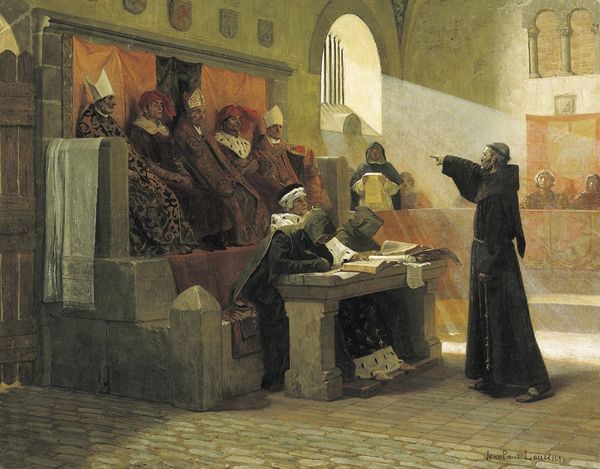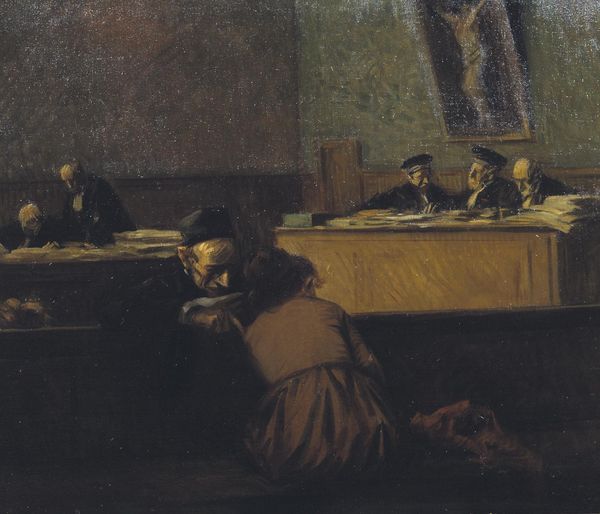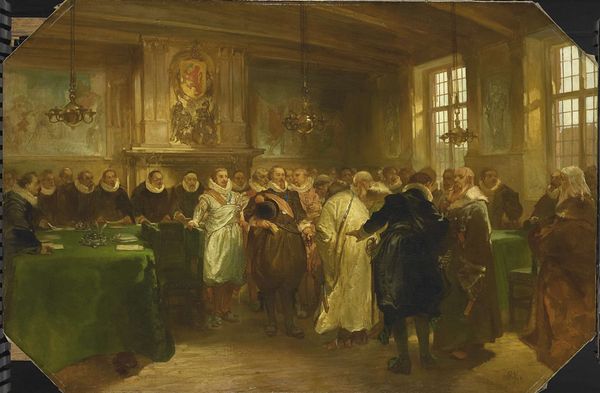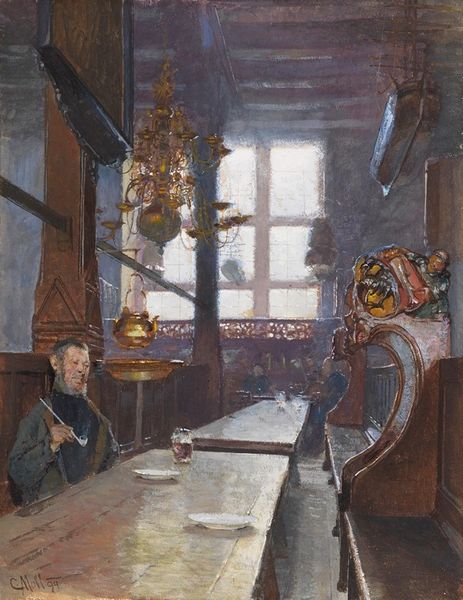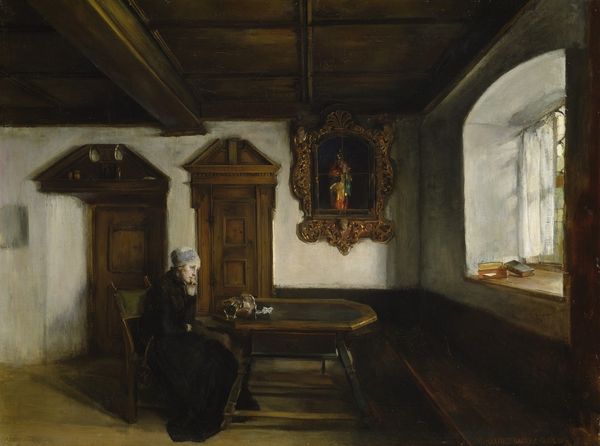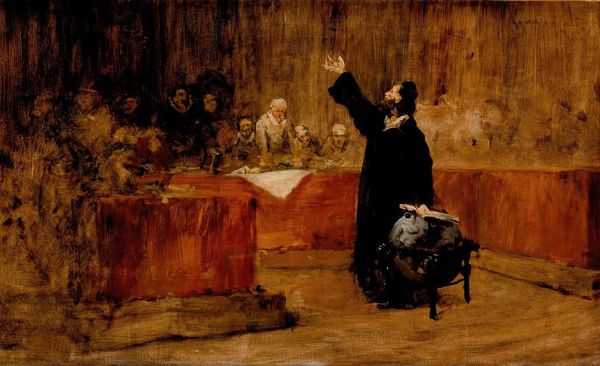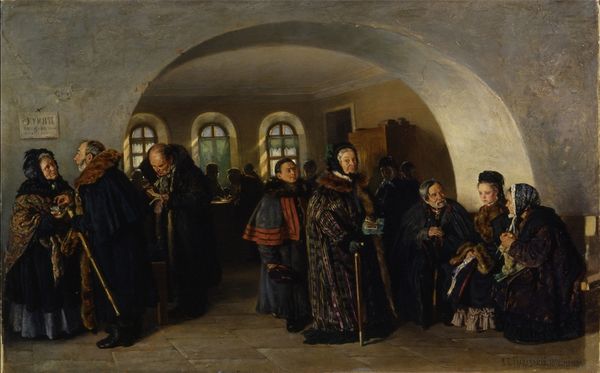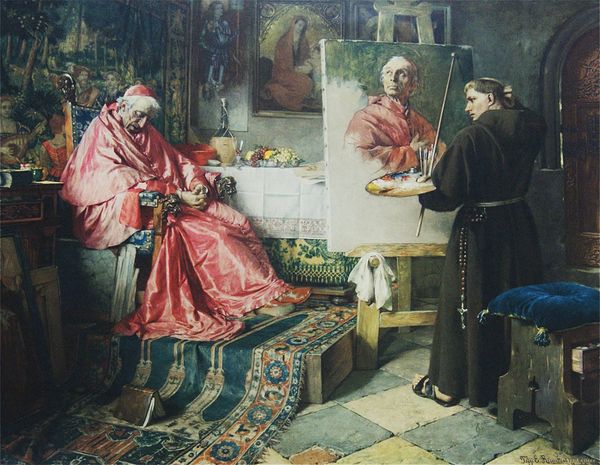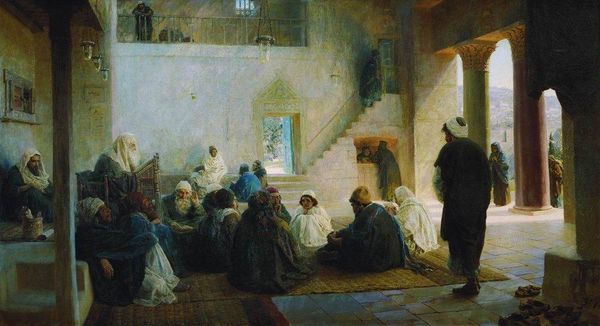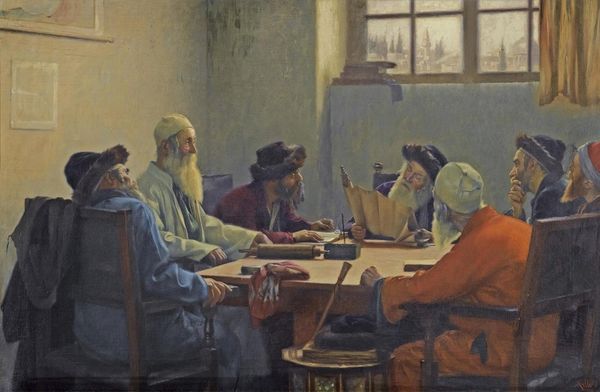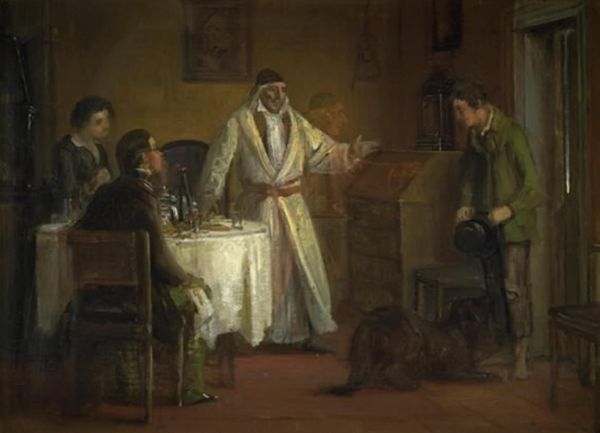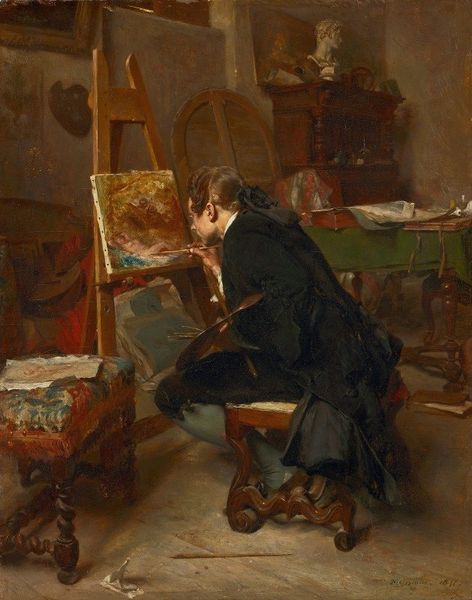
oil-paint
#
portrait
#
oil-paint
#
oil painting
#
underpainting
#
group-portraits
#
genre-painting
#
history-painting
#
realism
Copyright: Public Domain: Artvee
Curator: Theodoros Ralli’s oil painting titled "Refectory In A Greek Monastery" plunges us into the austere world of monastic life. What is your immediate impression of the artwork? Editor: A profound sense of somber stillness pervades the scene. The composition, particularly the contrast between the shadowed foreground and the faintly illuminated background, seems carefully calibrated to emphasize introspection and piety. Curator: Indeed, the muted palette certainly enhances that mood. Beyond the aesthetic elements, it’s compelling to observe how Ralli, through this gathering of monks, captures the weight of their traditions. Notice the man standing to the left. The way he has assumed his dominant posture as he appears to be reading gives rise to the immediate association to icons and the tradition of lecterns. Editor: Yes, that hierarchical positioning does establish a focal point. Speaking formally, the use of the single light source in the top-right not only heightens the drama but directs the viewer's eye, framing this gathering as a spectacle. And the orthogonal lines, provided by the table arrangement, create a visual echo leading back to that background doorway and into implied mysteries beyond our purview. Curator: I agree. The implied mysteries have ties that run deep into the subconscious mind. The ritual of shared meal in a religious setting – the refectory itself – possesses symbolic power, harking back to the Last Supper and other communal repasts freighted with cultural and spiritual significance. Do you observe it as being aligned to the ancient tableaus and iconography we can see in mosaics, byzantine iconography or ancient books and other refectory frescos? Editor: Absolutely. And it also suggests a deliberate construction, which gives the painting more depth of meaning through those historic symbolic echoes. Looking closely, the underpainting appears to contribute substantially to the work's character, lending a tactile depth, adding tonal shifts, and suggesting an engagement with material history through this technique. Curator: The visible underpainting truly adds a layer of visual richness, hinting at the unseen processes shaping faith and tradition across the ages. The artwork provides more than a scene, it opens up cultural dialogues between the figures, architecture, rituals and us. Editor: An evocative composition of form and light!
Comments
No comments
Be the first to comment and join the conversation on the ultimate creative platform.
